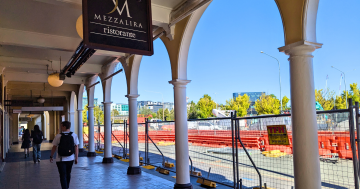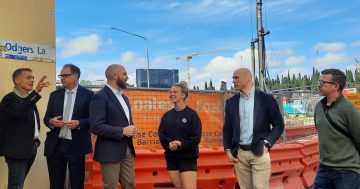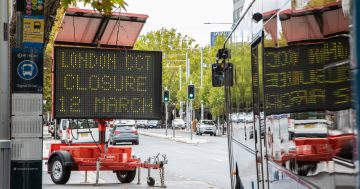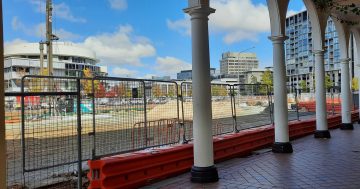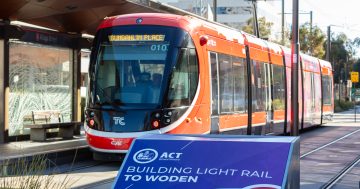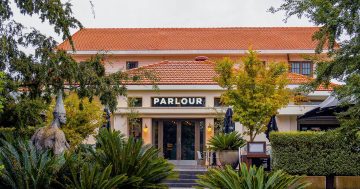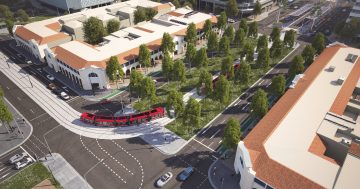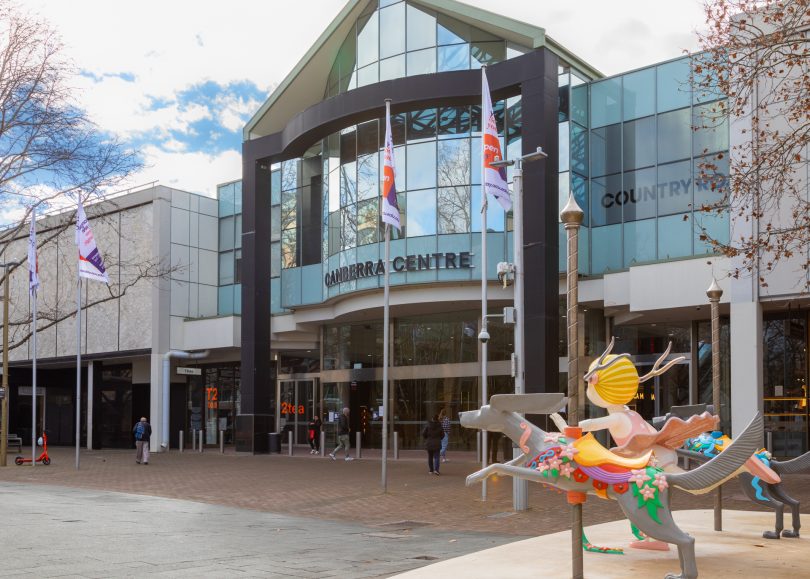
Civic must be economically vibrant day and night. Photo: Michelle Kroll.
Year in Review: Region is revisiting some of the best Opinion articles of 2025. Here’s what got you talking, got you angry and got you thinking this year. Today, Matt Croger bemoans the state of the Canberra CBD.
Once a bustling hub of lunchtime crowds and office chatter, Canberra City now echoes with silence and scaffolding.
The decline has been slow but steady—first COVID, then the persistence of remote work, and now city-wide development projects, most notably the light rail.
What was once a vibrant, if not beautiful, city centre is now a shadow of itself, wrapped in fencing and uncertainty.
The promise sold to us is one of future revitalisation. But the path to that future is paved with disruption, and the government has shown little intent to support those impacted along the way.
Their unwillingness to deviate from a rigid development timeline has spelled disaster for countless businesses. There’s been no meaningful support, no strategic planning, and no recognition of the real-world consequences of their decisions.
I want to be clear: I am not anti-light rail. I am anti-implementation – specifically, the timing, organisation, and communication around this process.
Three years of disruption for a track that will extend just a few hundred metres to Commonwealth Park.
Businesses knew it was coming, and many chose not to move into the City as a result. The massive new building from Morris Property Group on City Hill sits empty, overlooking a city devoid of foot traffic. The reported 10 per cent vacancy rate for prime buildings doesn’t even account for those awaiting demolition, meaning the real figure is likely much higher.
COVID ripped the heart out of a workforce that was once centralised in the City. What began as a necessary shift to remote work became a preferred way of life.
Some government departments now require teams to come in only once a fortnight. While this flexibility benefits workers, it has left the City hollowed out. And in this context, the government chose to begin major construction and reduce parking availability, further discouraging visits.
Carparks near the QT Hotel, City Hill, London Circuit, and the courts have vanished due to light rail construction, land sales, and pre-construction works. A walk through the west side of the City reveals once-popular lunch spots now eerily quiet, entire buildings empty, and cobwebs covering doorways to multi-storey offices. And through all this, there has been no comprehensive plan to support the businesses affected by these decisions.
I want to acknowledge the individuals within government teams who are tasked with supporting businesses. They are communicative and empathetic but they’ve been given no roadmap with any serious chance of success.
It’s baffling that nine years after the first sod-turning ceremony for light rail, there is still no clear strategy to help those impacted. What we’ve seen instead is policy on the run, focused primarily on hospitality and nightlife, while ignoring the multitude of other businesses that once drove the City’s economy.
Hospitality is certainly among the most affected, but it’s not alone. Daytime trade has been largely ignored, with the government offering arbitrary evening parking incentives in already diminished carparks. They continue to “consult with businesses” but why wasn’t this done years ago, before the disruption began?
Our business is fortunate. Twenty-five years of relationships have allowed us to weather many storms. We have loyal clients who now travel further and tolerate access challenges to receive quality healthcare. But not every business has the benefit of decades of reputation.
Even we are not immune – service industries rely on local populations, and the shift of the workforce to the suburbs has had a tangible impact. Growth has stagnated. We’ve had to source other avenues of work to stay afloat. Despite maps showing nearby parking, the prevailing sentiment among clients is that visiting us is a challenge they’d rather avoid.
It’s hard to believe that after years of disruption, the government is still in promotional mode. We’re still selling the dream while pretending the damage hasn’t already been done.
If we’re only now advertising the next phase, where was the master plan from the beginning? Why wasn’t there a comprehensive strategy to support the businesses and communities affected by the first phase? Instead of learning from past disruption, we’re doubling down – still improvising, still reactive, and still leaving businesses to fend for themselves.
A city cannot survive on weekend and night-time traffic alone. It must be economically vibrant day and night.
I believe in the long-term vision for Canberra City but I worry that many businesses won’t be around to see it realised. The government must step up – not with slogans and signage, but with real, targeted support for the businesses they’ve disrupted.
The time for lip service is over. The time for leadership is now.
Matt Croger is a physiotherapist and local business owner along the light rail corridor.












